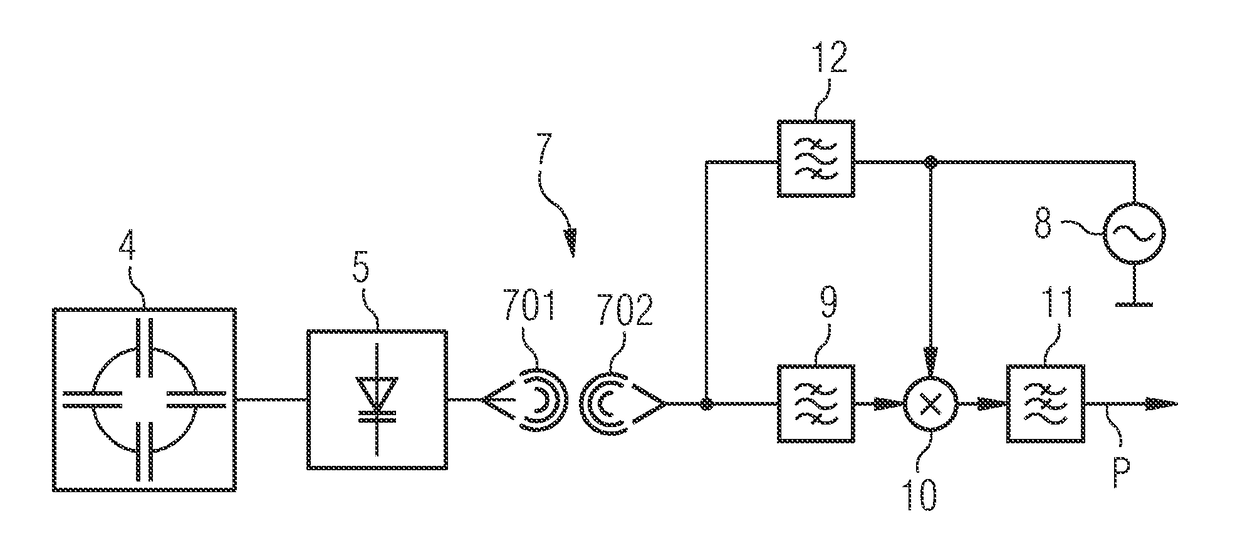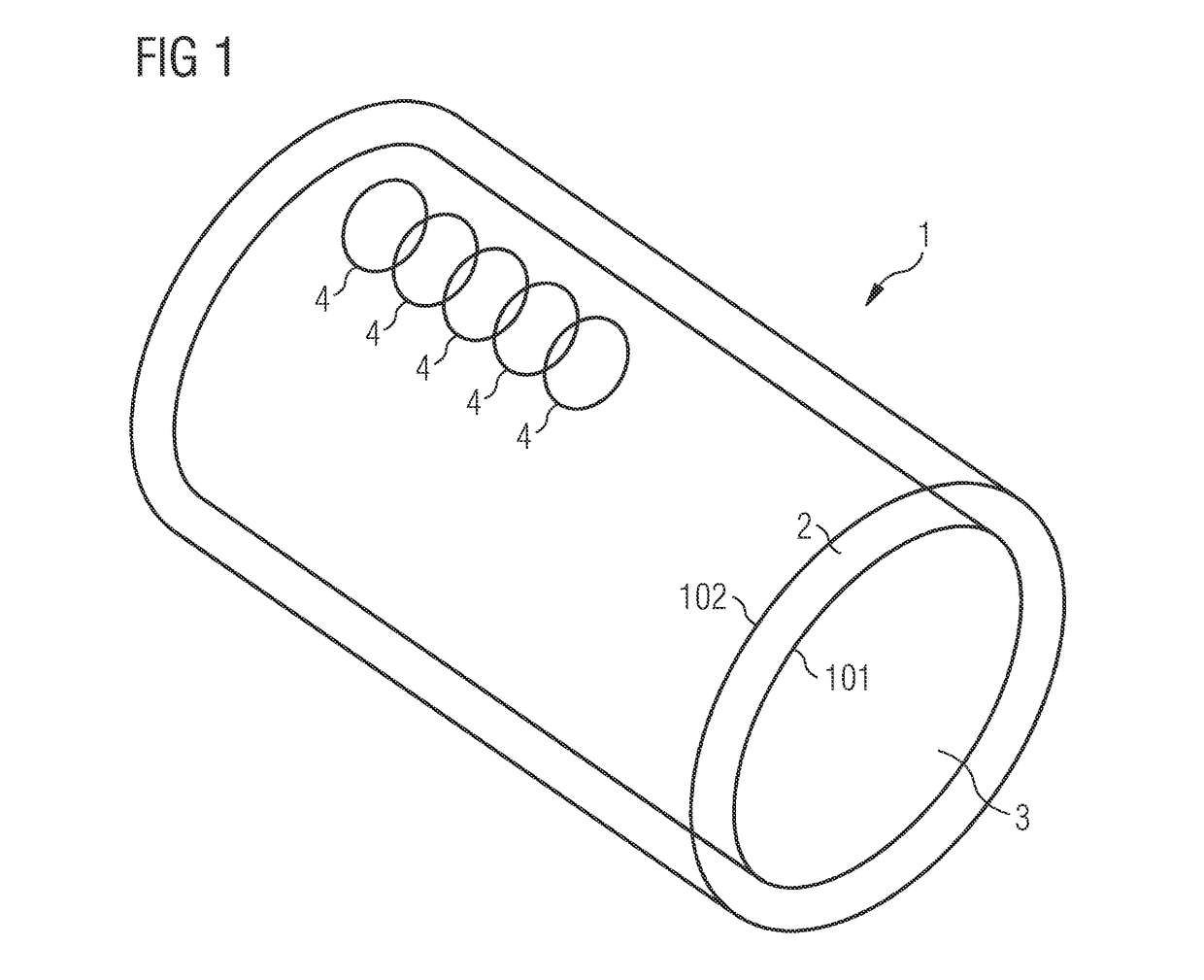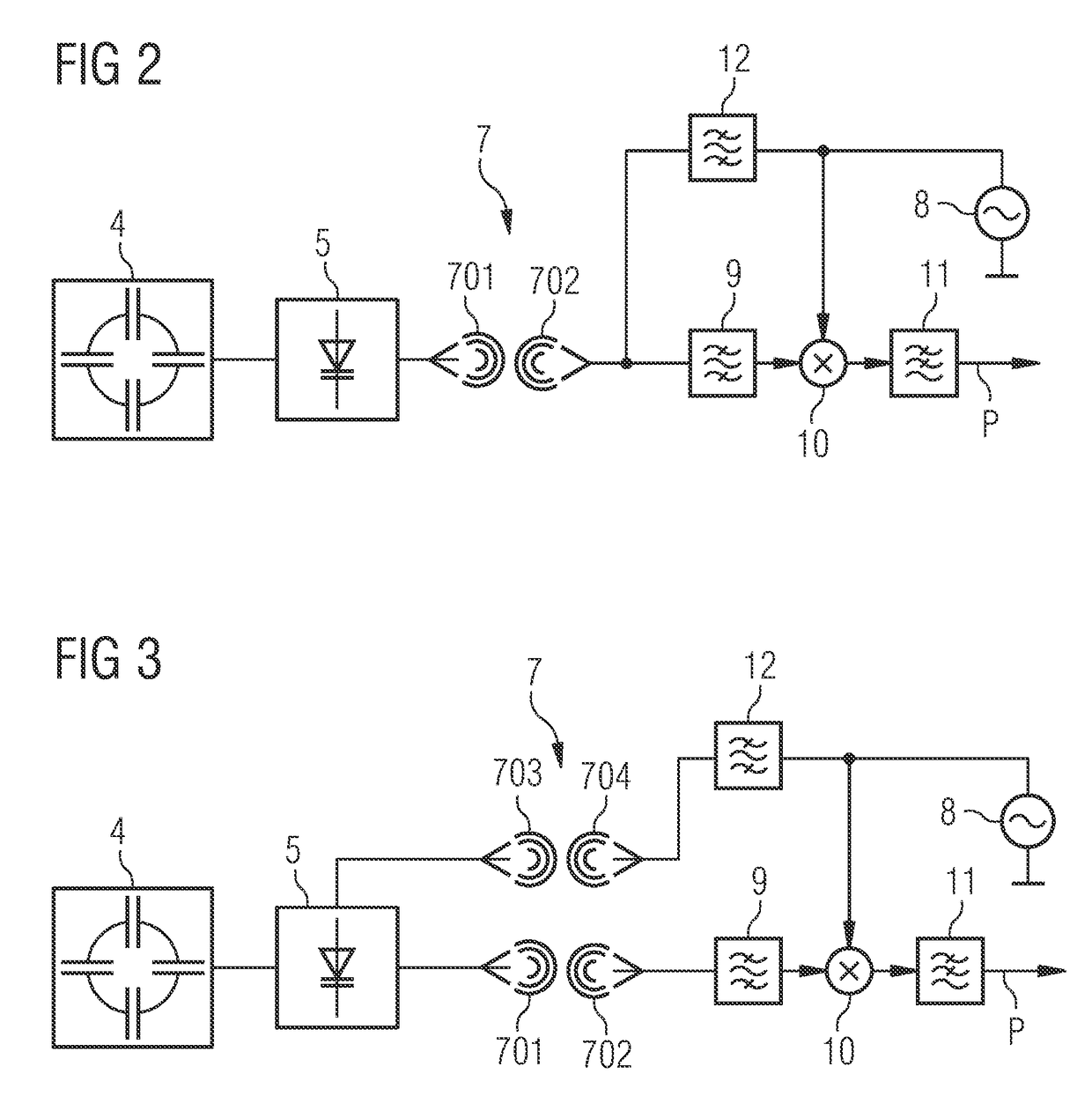Magnetic resonance tomography apparatus
a tomography apparatus and magnetic resonance technology, applied in the field of magnetic resonance tomography apparatus, can solve the problems of affecting the quality or sensitivity and the difficulty in emulating the corresponding cable feedthrough in the cryostat for the purpose of reading out signals, so as to reduce the inherent noise of the magnetic resonance receive antenna
- Summary
- Abstract
- Description
- Claims
- Application Information
AI Technical Summary
Benefits of technology
Problems solved by technology
Method used
Image
Examples
Embodiment Construction
[0028]FIG. 1 shows a schematic view of a tube or tunnel 1 that is used in an embodiment of a magnetic resonance tomography apparatus for acquisition of magnetic resonance signals. The magnetic resonance tomography apparatus includes, in a known manner, further components that may be provided in the magnetic resonance tomography apparatus, such as, for example, a main magnet for generating the static main magnetic field. Only certain components of the system are explained below.
[0029]The tube forms a cylindrical housing having an inner face 101 and an outer face 102. The patient to be examined is introduced into an interior 3 of the cylinder. A plurality of magnetic resonance receive antennas 4 (indicated only schematically in the figure) are installed in the cylinder. Such antennas are provided essentially along the entire circumference of the cylinder. For clarity of illustration reasons, however, corresponding antennas are depicted in one partial area only. The antennas are embodi...
PUM
 Login to View More
Login to View More Abstract
Description
Claims
Application Information
 Login to View More
Login to View More - R&D
- Intellectual Property
- Life Sciences
- Materials
- Tech Scout
- Unparalleled Data Quality
- Higher Quality Content
- 60% Fewer Hallucinations
Browse by: Latest US Patents, China's latest patents, Technical Efficacy Thesaurus, Application Domain, Technology Topic, Popular Technical Reports.
© 2025 PatSnap. All rights reserved.Legal|Privacy policy|Modern Slavery Act Transparency Statement|Sitemap|About US| Contact US: help@patsnap.com



